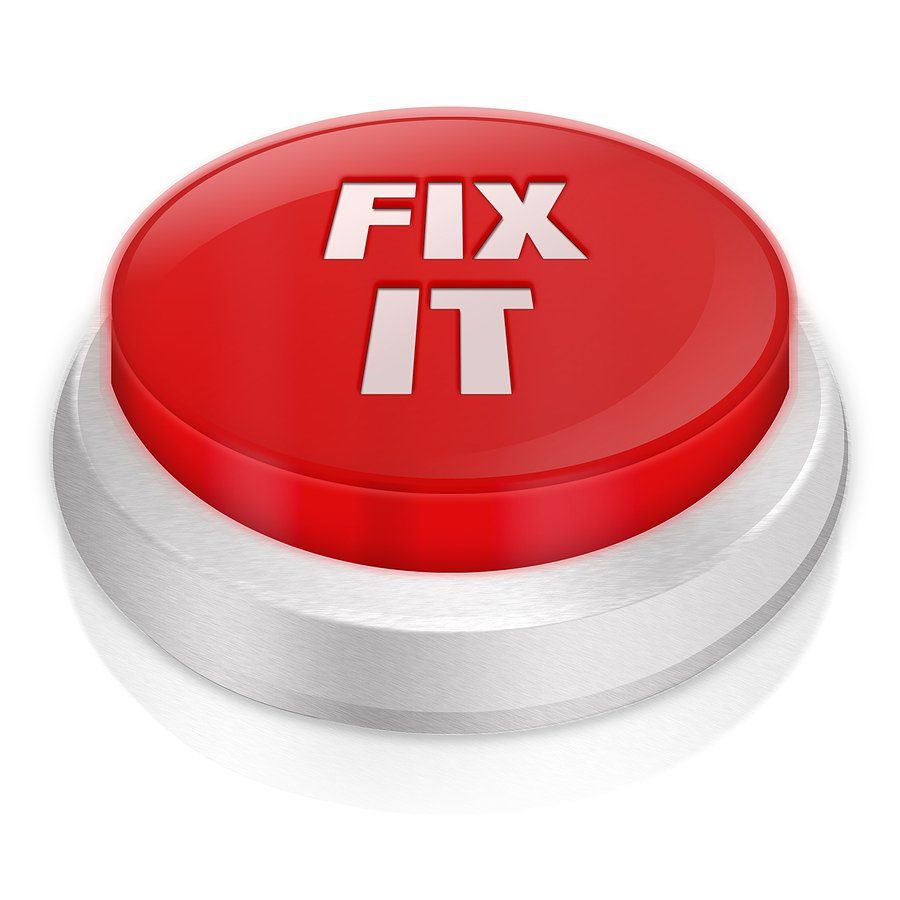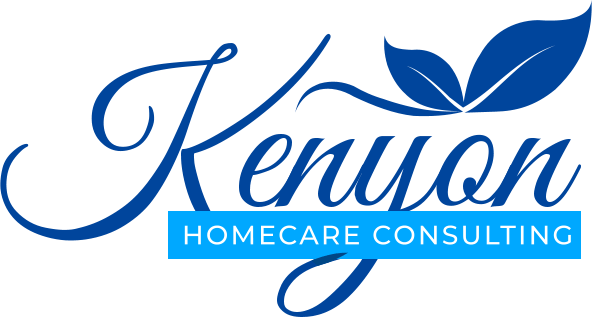Kenyon Connects
EDUCATION & TRAINING

For those of you who have been in home health for decades, the idea of competition between agencies revolved around how to get market share. You did marketing, developed relationships, maintained visibility in your communities and gave good care. With the nationwide expansion of Value Based Purchasing, competition has a whole new meaning to our industry. Let's look into the expansion. CMS began the original VBP project in 9 states on January 1st, 2016. It had 3 basic reasons listed for the project: Provide incentives for better quality care with greater efficiency; Study new potential quality and efficiency measures for appropriateness in the home health setting; and Enhance the current public reporting process. The goal was to show that quality scores could improve while there was a potential for significant savings to the Medicare program in dollars. The program showed that VBP did just that. CMS reports savings of $141 million annually with improvement of quality scores by 4.6% in those states originally involved. By this, it should be no surprise to our industry that CMS announced a nationwide expansion. CMS started the pre-implementation this year and has offered education to agencies to prepare for the full implementation on January 1, 2023. Agencies will see that payment rates will change beginning in 2025 based upon the performance numbers in 2023. You can register for the next scheduled CMS training entitled Navigating Performance Feedback Reports: Interim Performance Report (IPR) and Annual Performance Report (APR) which is scheduled for August 25th at 2pm ET. CMS also has many of the pervious recordings of trainings available for you here , so you can utilize the education and sign up for the listserv associated with Home Health Value Based Purchasing. The expanded Home Health Value Based Purchasing Model is set to base reimbursement on your performance in relation to other agencies like yours. It will look at certain quality measures each calendar year. Your OASIS, HHCAHPS surveys, and designated claims measures will calculate performance. An agency can expect between a -5% to 5% change in Medicare fee for service payments. So, what all this means for your agency is that you are not just competing for market share but for maximum reimbursement too. Agencies that do not perform will be hit for another loss to overall dollars. This could mean a transition of agencies no longer looking to provide Medicare services. It will be anticipated that certain agencies will not do well in the HHVBP model and not survive. The good news is that agencies focused on quality measures and patient satisfaction will thrive in HHVBP. Agencies need to keep the focus on Oasis accuracy, acute care hospitalization, and ER visits without hospitalization. Should you need consulting for your agency, Kenyon Homecare Consulting has senior level consultants with comprehensive knowledge and experience within the industry to help you navigate your clinical, operational, and financial needs. Call us today at 206-721-5091 or contact us online to see how we can help you succeed!

While working with agencies throughout the United States, we have the opportunity to see how many operate. This leads us to talk today about the new Oasis E tool being implemented January 1st 2023. For those who have been in the industry for decades, the implementation of a changed tool is not unusual. In our experience, when agencies educate on Oasis changes, it is normally limited to clinical staff who complete the tool. We need to look at this from the standpoint of ICD 10 coders. It is imperative for your ICD 10 coders to know the assessment tool inside and out. What Are The Changes From Oasis D to Oasis E? CMS updated the Oasis E tool on May 16th, 2022 and provided a PDF to the changes from the February 1, 2022 version. The changes are in line with expansion of Home Health Value Based Purchasing (HHVBP). So, it aligns with outcome based reimbursement. Now more than ever, the Oasis must be marked properly. We see the implementation of 3 different assessments within the tool: Brief Interview for Mental Status (BIMS),Signs and Symptoms of Delirium from the Cognitive Assessment Method (CAM), and the Patient Mood Interview (PHQ 9) which allows for expanded screening for depression. McBee and Associates offers a nice visual crosswalk tool to illustrate the changes from the Oasis D to E. What Does This Do For ICD 10 Coding? It means your Oasis needs to paint the actual clinical picture. Your ICD 10 coding isn't accurate if the documentation doesn't align. This isn't new. Now, HHVBP is going to need to see the outcomes on our patients come to fruition or your reimbursement will suffer. The check and balance of the certified coder means they need to understand the assessment tool as well or better than the nurse who does the assessment. The nurses look at the tool in a different way than the certified ICD 10/ Oasis coder. This is the analogy of the 2 sides of the brain. Putting both of these clinical pieces together is the whole picture and therefore, the whole brain completes the Oasis and coding puzzle. The coder is able to catch discrepancies or address items that don't fully align with the diagnoses based upon other documentation. You may currently have your agency doing coding in-house and if your coders are Oasis and ICD 10 certified, then great. Check their ongoing accuracy and whether it makes financial sense to keep it in-house. Spend the time and money to make sure your ICD 10 coders keep up-to-date on changes. If you don't have certified coders in place, then outsource your coding and Oasis review or you may really be penalized for errors in the tool. If you are looking to outsource, then make sure the person doing the coding is certified in ICD 10 and Oasis. Agencies Can't afford to have Oasis or ICD 10 coding errors cost them money. If you are looking to check the accuracy of your current coding system, outsource your coding, or need someone to provide educational assistance on the new Oasis E tool, Kenyon Homecare Consulting can help. Call us today at 206-721-5091 or contact us online to see how we can help!

Still Losing Staff? Have You Seen What Beefing Up Your Educational Programming Can Do For Retention?
Clinical employee retention is such a loaded subject. There are so many facets to what makes a clinical employee stay or leave an agency. You have to consider everything important to the employee while realizing generational issues greatly changes the focus for each individual. So, in considering wage, benefits, vacation, family leave, onboarding and the generation of employee involved, have you thought about what robust educational programming brings to the table? Have you ever considered it as a retention measure? It’s Not Just About The Onboarding: We used to see so many agencies with high turnover rates related to the onboarding process. Employees consistently wrote in exit interviews that the orientation was inadequate and employees felt thrown out on their own before ready to safely provide care. While there are still agencies out there with poor education and training in the onboarding process, Kenyon Homecare Consulting would like to focus on what you do to keep the employees challenged and engaged through ongoing education. Let’s consider each clinical background for purposes of this article: Home Health Aides: Aides are often our most underutilized resource with the highest turnover rate. Maybe this prevents you from investing training dollars because the overall lack of long term employment is a hindrance. So, look at things like pay increases attached to additional education. Our biggest cost in healthcare is related to chronic illness. Invest in chronic disease education programs for your aides. This way, the knowledge base is elevated as is the clinical capability of your staff. If you can reward staff with chronic disease certification with pay increases and a different level of engagement in the care plan, then you have potential for cost savings with other disciplines involved. Pull random care plans where chronic illness is the primary diagnosis. When reviewing documentation, are there visits made by a therapist or RN that could have potentially been made by the less costly home health aide? It isn’t about decreasing the nursing or therapist, but about maximizing the potential of the employees and determining service frequencies accordingly. If the home health aide is rewarded for advanced engagement and accountability in patient care, you greatly decrease the desire of the aide to jump ship. Rehab Services: Regardless the therapy discipline, advancing clinical education is a win-win for the agencies. However, since so many agencies utilize contracted services, they don’t invest here. That is a mistake. How many agencies still have therapy providers unwilling to address any medication issues in the home? How many do not provide simple wound care? Do you miss out on vital communication? How many extra visits does nursing make into the home because of it? Providing training to the therapists allows them to improve competence in areas where they may not feel comfortable. Reality is that just because something is within scope of practice doesn’t mean the clinician has competence in the area. My nursing degree says treating pediatric patients in a NICU is within my scope of practice. However, spending the majority of my clinical career in home health and hospice tells me I am clearly not currently competent to do so. We can’t throw our clinicians into the deep end. How many therapists have refused or left your agency because they were uncomfortable or unwilling to complete something within scope of practice? How many would stay if you provided education and training that allowed them to become really good (and comfortable) at managing what you need them to address in patient homes? Nursing: Now, let’s talk about education from the standpoint of mixing things up for your case managers here. Since all nurses provide case management for the patients, we don’t often evaluate how empowering those in the role can help retention. You may have the nurse that does an absolutely fantastic job in the home, but haven't trained these nurses on the meaning and scope of case management. Did you just assume they are really good at the process? You need to also consider your client population in your education to nurses. What is missing that really improves patient care while getting the nurses excited about their mission in the homes? Have you asked them? Ok, What’s Next? If you would like to think differently about education and training as a retention measure, then figure out what your employees are missing. Whether it is chronic disease, specialty services, or improving competence in certain tasks, you need to invest in the right programming. And, you can’t determine what your agency needs here without talking to clinicians. So, include them in the strategic plan. At Kenyon Homecare Consulting, we assist agencies with education to include on-site and virtual training platforms, strategic planning with seasoned clinical consultants, and operational assessments to determine what your educational program needs. Call us at 206-721-5091 or contact us online today!

Chronic disease management is something that is so vital to patient outcomes and efficient patient care, but it is often put on the back burner of day-to-day operations. So ask yourself why you haven’t invested in keeping chronic disease education on the forefront of your plan. Is it financial? Is it because you don’t have the staff to pull from the field? If it hasn’t been something you have thought about in a long time, then it’s time to revisit your plan. Why Chronic Disease Education? It is a well-known concept that when you put the clinical emphasis on something, it improve for a period of time. For instance, have you taken a routine approach to Oasis education at some point in the past? Did you notice an improvement in accurate Oasis scoring? When our staff is engaged with routine education, the topic becomes forefront in routine practice. So, it only makes sense to make chronic disease education an important investment in your agency. Now, let’s take a look at things to consider when choosing your chronic disease education platform. 1. Online or In-person: For those agencies large enough with decent-sized education budgets, you may have your own education department. This makes in-person lecture style teaching work for your agency. If you don’t have your own in-house education department, then online is the more affordable and easily accessible option. Either way, you have to find the best fit for your agency. 2. Comprehensive Teaching: Chronic disease education is a huge topic. You have to consider the disease process, care-planning, care coordination, and discipline specific care. 3. Discipline Specific Education: Chronic disease education isn’t a nurse only thing. It needs to include therapy disciplines and home health aide staff. Our aides are so often underutilized and they can be such an integral part of chronic disease management. 4. Ongoing Process: This can’t be a one-and-done kind of teaching. You have to make it consistent to stick just like anything else you want to implement in your agency. Hone in on certain disease processes one at a time. Then, what changes in the care plan depending upon how long the patient has had the diagnosis? Work with staff on realistic care plans. Are you going to suddenly make the 45 year smoker quit? If not, then maybe you need to work in other areas that you can improve quality of life for the patient. The care plans need to be patient specific and not cookie cutter for a particular diagnosis. 5. Operational Changes: Once you have completed the education to staff, then you need to move to how it will change the way the clinician practices in regards to work flow. You need to have a plan in place to change the way staff execute the care plan. You should see an increase in care coordination that is meaningful and patient specific. If you just provide the education and no way for the clinical staff to put it into practice, the dollars you have invested will be lost. Kenyon Homecare Consulting Can Help: At Kenyon Homecare Consulting , we have comprehensive educational platforms to help your homecare staff make a difference in chronic disease management. Give us a call today at 206-721-5091 or contact us online to see how we can help you become the experts in chronic disease care.

The world of ICD 10 coding is complex. Over time, nurses have become more receptive to the talent and expertise certified coders bring to the table. However, it has not always been that way and in some cases it still isn't. Let's look at why the buck still needs to stop with the nurse before coding can be truly complete. Bridging The Gap Between The Coding And The Clinical: The reality of ICD 10 coding is that the RN has to have his or her name on the document. So, when there is coding and clinical conflict, nurses have the right and the duty to question before their names are on the 485. When speaking to nursing staff, encourage questions and dialogue between the two departments. Nurses should question what doesn't make sense to them. Ultimately, the coder is just as capable of human as error as anyone else. So, if it doesn't make sense, then the RN should question the coder. Second, we often see nurses disagree with the order the diagnoses are listed on the 485. This is especially common for seasoned nurses who were in the field prior to ICD 10. Based upon the rules of coding, the order of the list may make complete sense when following coding today's guidelines. Simply having an open dialogue between coding and nursing can remedy this issue in the future. If you have in-house ICD 10 coding, then it may make huge sense to invest some time into some basic education to nursing staff from the coders. This can clear up future questions and issues nursing may have with your coding. If you outsource, then have your coding solution assign key contacts to complete your coding. It becomes very frustrating for nursing staff if they do not have a primary contact they work with often. You can certainly see where there is a lack of trust or rapport between coding and nursing if the RN never speaks to the same coder. Next, your coding solution should be willing to work with nursing staff to alleviate any questions or concerns from nursing. If they are not, then you don't have the right solution on your home health team. Kenyon Homecare Consulting Can Be Your Complete Coding Solution: At Kenyon Homecare Consulting , we have seasoned certified ICD 10 coding solutions that can complete basic coding up and through review of the Oasis and 485. Let us help bridge the gap between clinical and coding by providing skilled staff to complete your coding and work through the needs of the nursing staff in your agency. Call us at 206-721-5091 or contact us online to see how we can help you today!

We all know that the first impression a potential employee has to your agency is the interview. If they take the position you offer, then the second and most important is the orientation you provide that employee. Ultimately, this can often be the make or break of success for your new staff. Let's consider some of the mistakes often made in onboarding and how to avoid them moving forward. Redefining Your Onboarding Process To Make It Successful: When considering turnover rates in your agency, do you look at onboarding as a potential cause? If agencies have someone stay 3 months to a year after completion of orientation, the onboarding process is often missed as a reason why employees leave. Your first step is to take a deep dive into the process of orientation and decide what potential errors are there. Consider these items and your grade card as to how you complete them: Do You Have A Process For All Positions In Place? Many agencies will answer yes, although the process is not well defined. Determine how each position in your agency is oriented and if the process is defined. If you have multiple branches, do outlying branches just have to "wing it" based upon number of staff and dedicated time they can place on the process? What Is The Average Length of Time Allotted For Orientation? Now, we realize there is no cookie cutter for length of time and that all employees learn at different rates, but this if often widely different throughout agencies. Let's consider nursing positions to emphasize this point. We have seen orientation last anywhere from a week to four months with nursing staff. First of all, throwing an employee into call and independence too soon is a disaster for your patients and the employees. Four months is also too long. These employees become very accustomed to light schedules and never being on call. Then, when you finally give them the workload of typical days, it becomes overwhelming and they quit. Is Someone Designated To Track Progression Of New Hires? Someone at your agency should be the gatekeeper here. Often times we have staff that are already behind or working overtime involved in orientation. We see new employees not being taught well in the process. You may have the most efficient employee in charge of orienting new employees. The problem is that you may have never provided guidance or an orientation process for the employees to work through with new staff. The best employees aren't always the best teachers. Make sure you have new hires matched with the right person for orientation. Another consideration here is how the employee is moving through orientation checklists. Sometimes, having someone tracking the progression closely means all items are addressed in a timely manner. We have seen employees on orientation for longer periods of time because a few items were not addressed methodically along the way. Whether this is HR, a department head, or a position designed to assist with the orientation process, someone needs to keep the process moving. How Are You Checking With The Employee? Employees need to be spoken to along the way to receive feedback as to how the process is moving. We need to know if employees do not feel competent with certain skills so we can focus on working through that with them. Does the employee feel like the staff is providing proper mentorship? Sometimes we miss the employee in the process here. At Kenyon Homecare Consulting , we focus on helping agencies meet goals of high quality, patient focused care. We can help look at your operational processes if you are having issues with turnover or your orientation process. Let us help you change your processes to make a meaningful difference for your employees and your bottom line! Call us today at 206-721-5091 or contact us online to see how we can help.

Medpac just recommended another 5% reimbursement cut to home health in 2022 . Are you thinking, How can we manage another reimbursement cut on top of everything else we are trying to accomplish? Then, the question we will ask today is what did you do to pivot for PDGM? Well, We Made Cuts? The reality is that most agencies will say that staff was cut, bonuses were eliminated, and that there aren't as many therapy visits. That really isn't the pivot we are talking about here. Unfortunately, agencies shy away from really drilling down to clinical operations as it seems overwhelming to try and change. So, the result is more and more responsibility is tacked on the nurses to manage while turnover increases and there are no real changes to the other clinical disciplines. This isn't something that is seen occasionally but something we see all the time in agencies. The truth is that sometimes it takes a different approach to clinical care to help your bottom line and make less cuts to staff and benefits. On top of it, you don't have to lose years of your life trying to figure out how to make things work and turn a profit doing it. Is Your Staff Ready For Change? Take a look at what changes you have put on staff in the last couple of years and how successful implementation really was. If you can see the successes, then you know who your change agents are within your organization. If it wasn't, then it is time for a new approach to change. Is the change you see and desire in your head well communicated to staff. Do they see what you see? Do you know what the change needs to be? This is a little tougher question. If you aren't clinical, then you may know there needs to be a change, but it may be difficult to have credibility with clinical staff in communicating what needs to happen. This is where you need your change agents. They are integral to bridging the gap between administration and clinical practice. Let Kenyon Homecare Consulting Be Your Change Agent: At Kenyon Homecare Consulting , we can help be your change agent. We can analyze operations and help guide staff into meaningful clinical change leading to profit in PDGM. Call us today at 206-721-5091 or contact us online to see how we can be your change agent or help train some for you.

When you run one or more homecare agencies, education for aides is crucial to your success. Properly-educated caregivers provide better client care, get work done more efficiently, and will benefit your organization. But what’s the best way to educate your employees, who are busy adult learners holding down a job and managing a family and private life, as well? Studies show that private employers spend more than $200 billion each year training their employees. Sadly, much of that money is wasted as a result of ineffective training practices. So before you spend precious resources on a learning system that simply doesn’t work, take a look below to uncover the secret to homecare aide education success Education Designed for Adult Learners If you want to teach adults a new concept, avoid passive lectures. This type of training does nothing to help adults retain information. When it comes to effectively educating adult learners working in homecare agencies, here are a few key things to remember. Unlike children, adults thrive best with self-directed learning. This happens when students work with instructors to develop individual programs that address their specific needs. Active involvement is key. To accurately absorb and retain new information, adult students need action, such as participating in case scenarios which directly relate to their work experience . The ideal adult learning environment encourages intellectual freedom and creativity. Education That Gives More Bang for Your Buck In addition to the factors mentioned above for effective caregiver education, consider which programs offer the best ROI for your homecare agencies. Training employees can quickly become an overwhelming drain on your budget. Bringing in experts to hold education sessions, hiring additional staff to provide client care while other employees are in training, and costly study materials are all ways that aide education breaks the bank. To avoid these unnecessary costs, consider investing in an online program. With online education for aides, you’ll save money because: Students learn at their own pace No hard-copy materials to purchase or update No associated expenses when speakers come and present No travel expenses for employees to go to seminars Aside from saving money, online aide education provides an ideal adult learning environment. It allows caregivers to work independently, gives them real-life scenarios to practice, facilitates putting what they learn to use right away during client care, and gives flexibility to study at their convenience. Education That Benefits Your Organization There’s another advantage of providing advanced education for your employees: it results in an elite group of caregivers. Advanced chronic disease education, specifically, creates this elite group and benefits your organization in several ways. With chronic illnesses on the rise among older adults, homecare success is practically guaranteed when you have an elite staff. Here’s why: Sets you apart from the competition. Allows you to provide specialized services. Improves client care and satisfaction, leading to more referrals. Boosts aides’ confidence and increases employee retention. Allows you to cater to the specific needs of your community. With the right homecare aide education that caters to adult learners, you’re giving your organization the best chance for success. To find out more about effective online training, look at Kenyon Aide University. Discover a chronic disease education program that is convenient, cost-effective, and provides chronic disease certification.This allows you to train an elite group of caregivers to provide specialty services needed in your community. Reach out to us to get started! This entry was posted in Education and Training and tagged homecare education, home health aide training, aide traini

According to the CDC, chronic diseases are the leading cause of death and disability in our country. In 2012, approximately half of all adults in the United States suffered from at least one chronic health disease. What’s worse, one out of four adults had two or more of these life-altering conditions. If that’s not enough to grab your attention, consider the fact that seven of the top ten causes of death in 2010 were chronic diseases. Chronic Disease Education Many elderly adults suffer from numerous chronic illnesses, which are on the rise in the United States. This epidemic results in the majority of healthcare dollars being spent on the diagnosis, treatment, and management of these diseases. Where does your healthcare organization fit into the picture? With the increase of chronic conditions, clients and their families need elite caregivers who are properly trained to help care for and manage their chronic illnesses. Chronic Disease Education and Your Staff When considering how to create an elite staff that is certified to offer the specialized care that clients with chronic ailments require, consider setting guidelines regarding which employees should participate in your chronic disease education program. To maximize the chronic disease education you provide, choose employees who have shown loyalty to your organization, as well as a desire to succeed and move forward in their careers. Some factors to take into account when making your decision: Time on the job – While length of employment doesn’t always equal ability, or even loyalty, it’s a good indicator as to which employees are likely to remain at your organization. These are the people who make good candidates for your chronic disease education program. Reviews – Yearly reviews are a good place to look when determining which employees might make up your elite staff. Those who consistently achieve good reviews display their willingness to work hard, as well as their ability to get the job done well. Future goals – If you’re unaware of your employees’ goals, you need to ask questions. Those who plan on staying with your organization long-term or want to advance their careers in the healthcare field are good candidates for advanced training. nce you’ve created guidelines for choosing your elite caregiver team, take the next step toward success by providing easy-to-access, sufficient chronic disease education. . Chronic Disease Education and Your Bottom Line By building an elite staff, you give your organization an edge over your competition. Clients, their families and referral sources seek knowledgeable caregivers who can help manage client conditions, recover from setbacks, avoid hospitalizations /rehospitalizations, and prevent complications. While employing an elite staff benefits your clients, it also significantly benefits your organization – and your bottom line. Here are a few of the many ways: Higher employee retention – As an owner or manager, you know the stress employee turnover has on an organization. It costs time and money to find and train replacements, and to fill in the responsibility gaps during the transition. When you provide advanced education, employees are happier because they see a career path within your organization. Happy employees lead to less turnover. To maximize this effect, consider providing additional benefits to staff members who complete the education and become elite employees. Such benefits can include: Paid vacation Increase in pay Health insurance Recognition on name tags Increase in referrals – When your organization is known to have an elite staff, clients and professionals alike will send more customers your way. It’s a simple, effective project that yields significant results. When you’re ready to make the jump toward building an elite staff, chronic disease education is the first step. Take a look at Aide University today to learn about the numerous benefits of providing chronic disease education for your aides.

